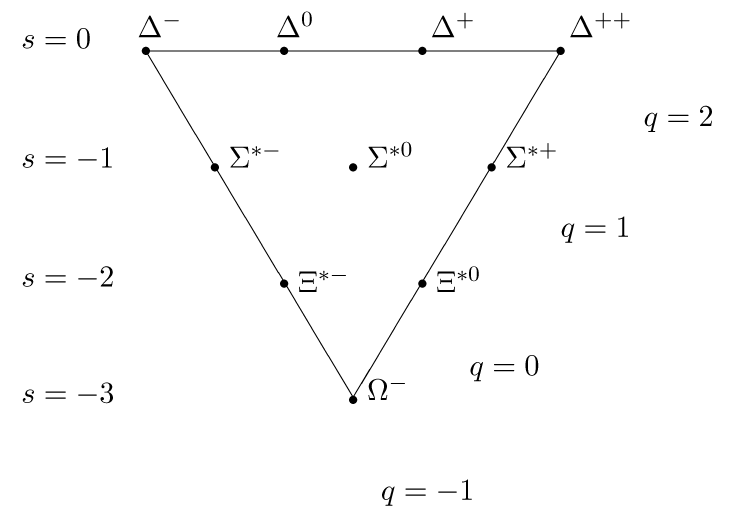I recently saw a question:
A baryon has quark structure $dss$ and it decays via the weak interaction. Which of the following is a possible decay product?
- $\Lambda^0+\pi^{-1}$
- $n + \pi^{-1}$
- $\Lambda^0+e^-$
- $K^++K^0$
It's easy to rule out the last two. The fourth option has charge $+1$ but the initial baryon had a charge of $-1$, so that's no good. The lepton number is originally $0$ but in the third option it is $+1$, and that also can't be the case. However, I don't know how to distinguish between the first two. Both have the right overall charge, the right baryon number, the right lepton number. Other conservation laws such as energy and momentum are irrelevant here, and since this is a weak interaction the fact that strangeness isn't conserved doesn't bother me.
I am pretty sure the answer is: $\Lambda^0+\pi^{-1}$, just on the basis that I know the following is possible: $$s\to u+d+\overline{u}$$Hence: $$dss\to d+s+u+d+\overline{u}\to uds+d\overline{u}=\Lambda^0+\pi^{-1}$$Should be possible. But I figure that: $$dss\to d+\color{red}{s}+u+d+\overline{u}\to d+d+u+\color{red}{d}+\overline{u}+(\color{red}{u}+\color{red}{\overline{u}})\to n+\pi^{-1}+\text{annihilation}$$Is a reasonable thing to occur, so that the second option is reasonable.
Coming from the limited A-level knowledge, I don't know how to thoroughly rule out the possibility of the second decay product. Indeed, I'm sure the strange quark can interact in ways I've not learnt about, so the excuse: "I can't see how it could make that" isn't something to rely on: although it feels weird to include an annihilation as part of the decay chain, it might still be possible through means that I'm unware of.
Question: What conservation laws, or general principles, am I missing which could help me decide whether or not $dss\to n+\pi^{-1}$ is possible? I'm pretty sure this interaction ticks all the $A$-level boxes.

